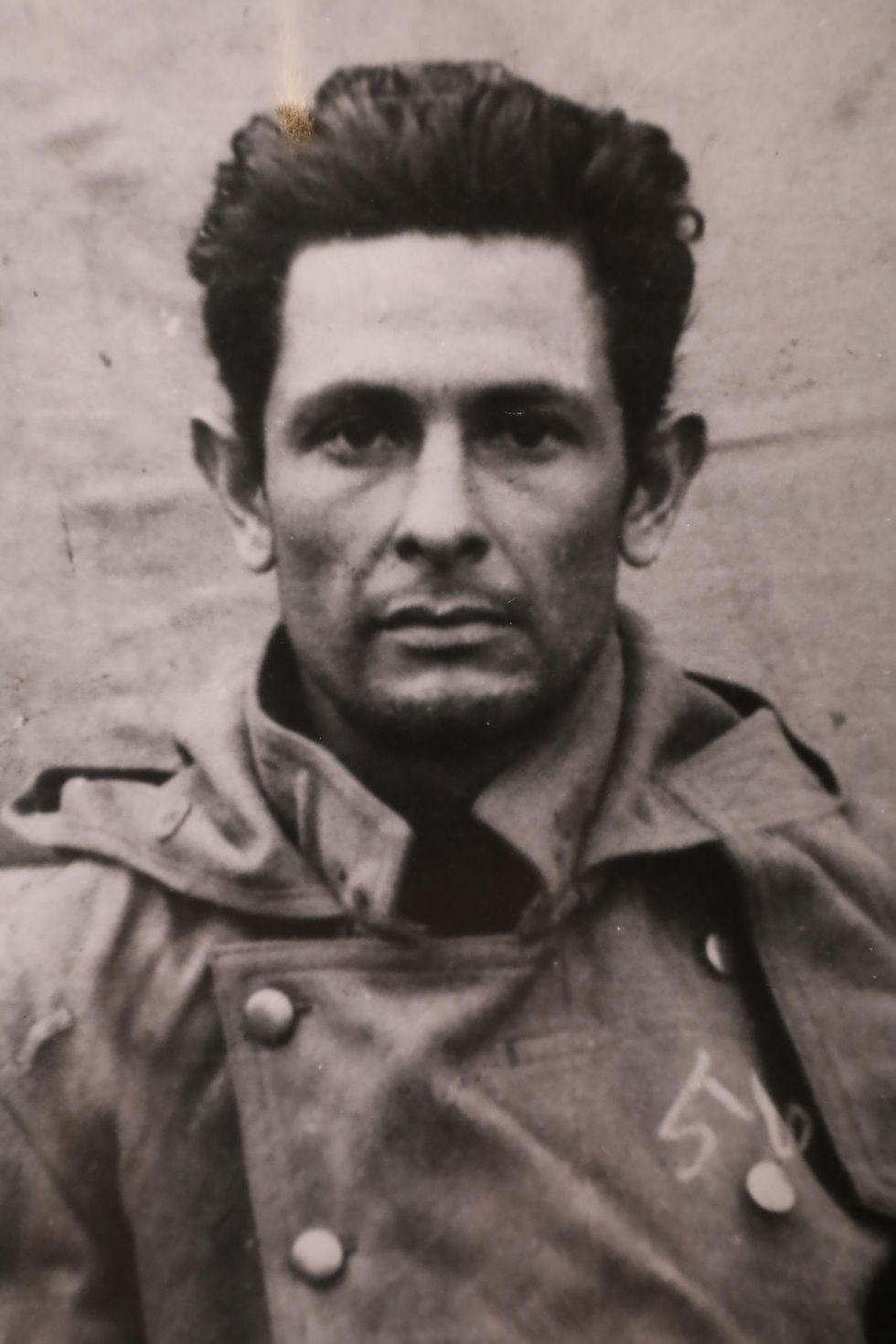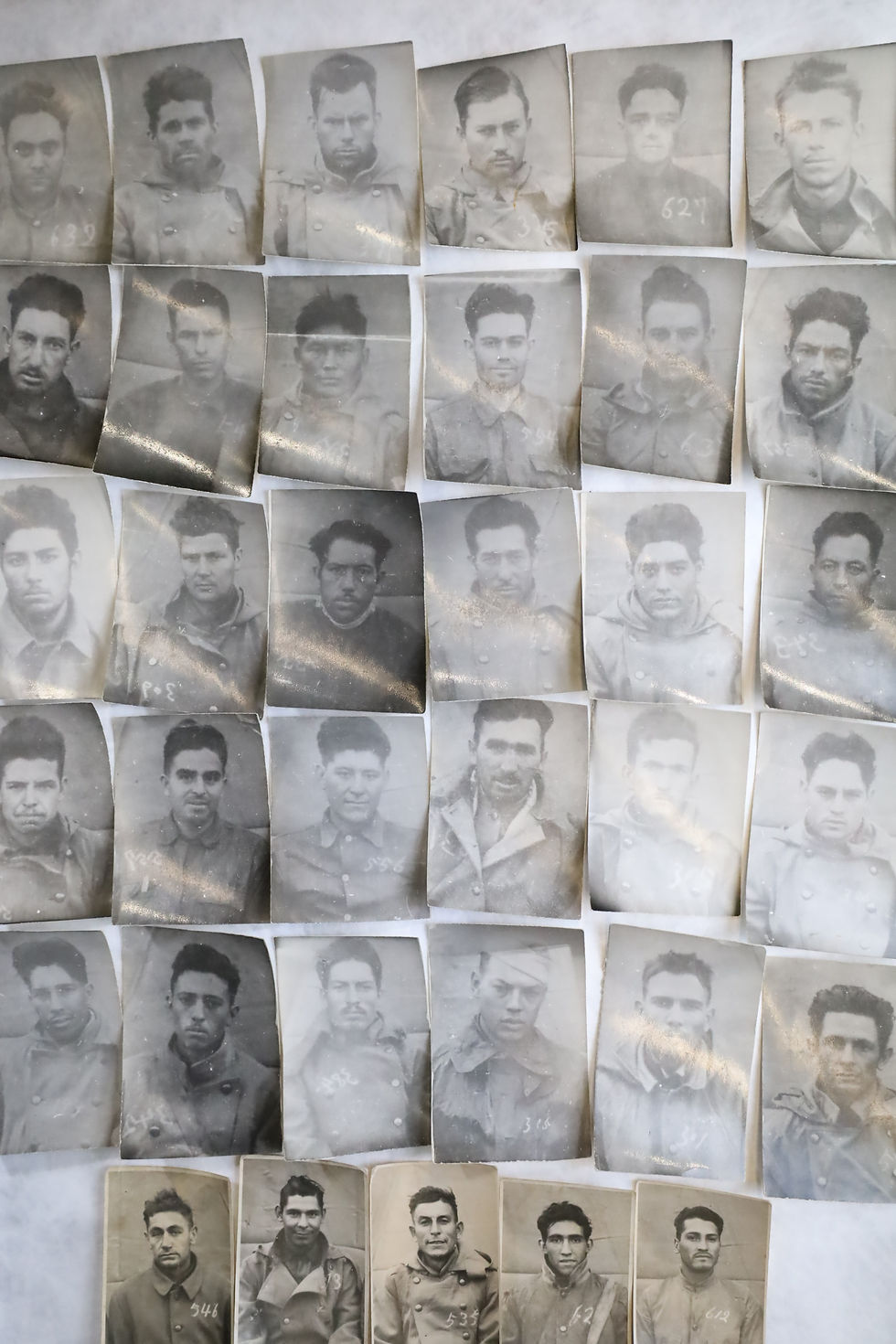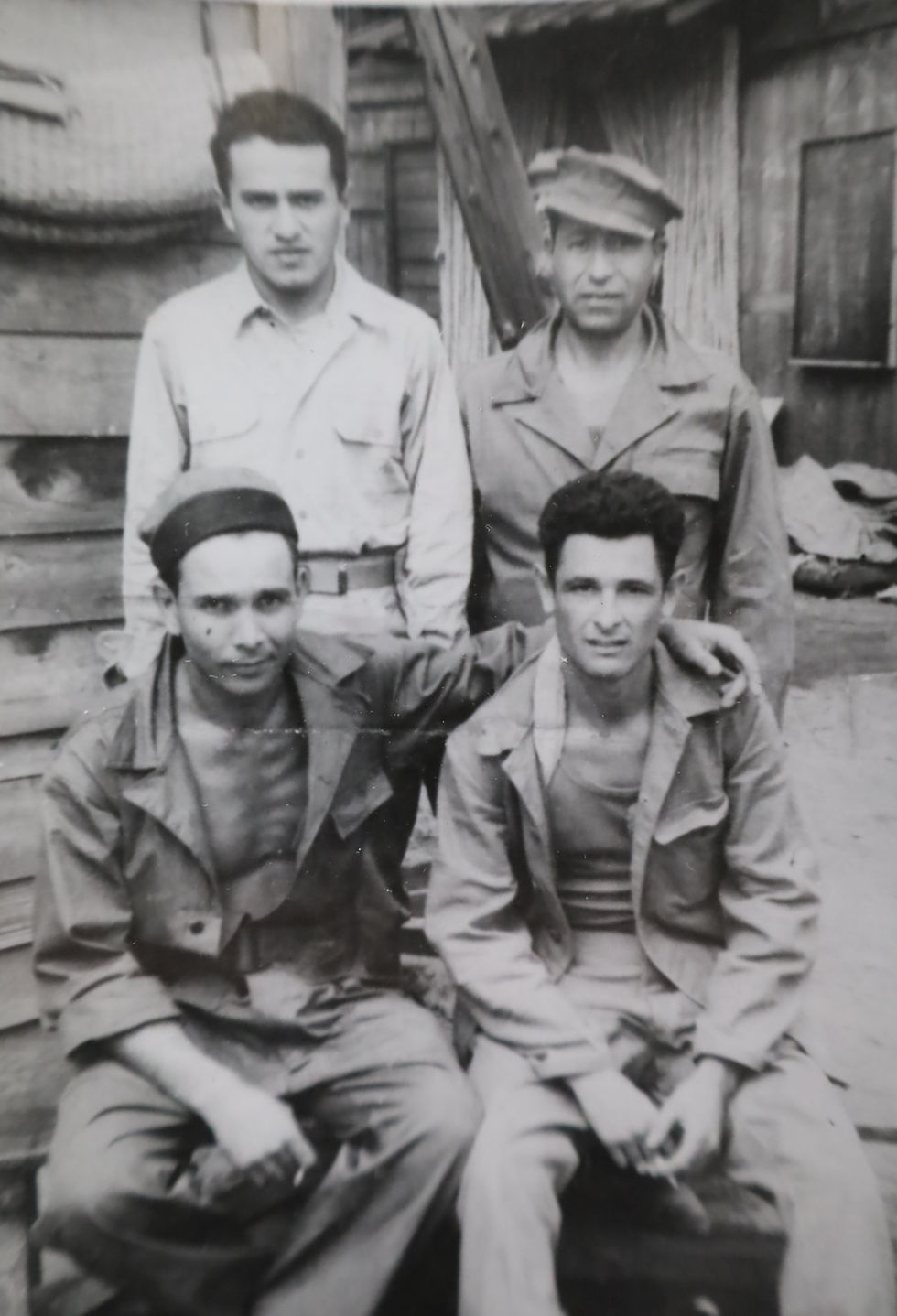Brotherhood “First in Spite of Hell” Exhibit Curated by Natalia Martinez, Collection Manager
- Laureta Huit
- Apr 5, 2024
- 4 min read

American soldiers walking through The Bataan Death March, New Mexico Military Museum Collection.
Opening April 9th, 2024, at 9am in conjunction with our Annual Department of Veteran Service Bataan Memorial Ceremony at 11am.
The Bataan Death March is a segment that is often unheard of in the grand scope of World War Two by Americans. It is not called the Bataan Death March solely because our soldiers were forced to walk across the Philippines to Camp O’Donnell for imprisonment. The reason as to why it has such a striking name is because of the horrific abuse and vicious conditions these men underwent while continuously walking for 65 miles. It is a dark moment in global history and only in the last few decades have the cruel details surfaced for the public to learn about.
The New Mexico Army National Guard 200th Coast Artillery Anti-Aircraft (AA) regiment is synonymous with the Bataan Death March. After the 200th was inducted into the US Army and trained for eight months in Fort Bliss, Texas, they were sent abroad to guard the Philippines. Throughout their training, they formed a unique bond and cultivated a brotherhood, calling themselves the amigos, primarily consisting of Hispanics, Anglos, and Native Americans. Unknowingly, when they arrived in the Philippines, they received outdated machinery and artillery from World War One. With malfunctioning artillery, a lack of food and medicine, and insufficient men to combat the Japanese invasion, they were deserted and needed to fend for themselves on the Bataan Peninsula. To their disappointment, they followed military orders to lay down their arms and surrender which led them to their fate as prisoners of war.

Louis G. Romero as a Prisoner of War, Japan, October, 1942
2024.040.03, Gifted by Rudy Duran, New Mexico Military Museum Collection.
This exhibit follows the story of a seemingly ordinary New Mexican, Louis G. Romero, born December 28, 1916, and raised in Albuquerque. As a young man, he joined the Civilian Conservation Corps, hauling cattle and ranch supplies as a heavy international
truck driver. After receiving an honorable discharge for his two years of service, he enlisted in the Army National Guard. Louis was called to active duty within the 200th CA Battery A regiment on January 6, 1941. From there, he was sent to the Asiatic Pacific
Theater to work as a Searchlight Non-Commissioned Officer (NCO) for the anti-submarine campaign. Searchlights were used as anti-aircraft defense tactics to detect bombers and submarines. They operate through sound locators and radars to indicate any threats from enemies. Louis oversaw one unit of crew members and supervised the operations for searchlight battery installations.

Thirty-Five New Mexico National Guard 200th & 515th Coast Artillery Soldiers as Prisoners of War, Japan, C. 1942 - 1945 2023.033.001, Gifted by Marie Sue Romero, New Mexico Military Museum Collection.
A sharp-witted soldier, Louis would later prove himself as a heroic leader and role model for the men of the 200th while imprisoned. Louis was one of the older soldiers who received the nickname "El Viejo, or "the old one," within the prison camps and was known to encourage others to stay alive. As well as how to tactfully survive the abuse of the Japanese guardsman. Louis was a prisoner of war of the Japanese government from April 19th, 1942 to September 4th, 1945. Through native toughness, these New Mexican soldiers, like Louis, relied on their upbringing, companionship, and faith to endure their sickening imprisonment. They chose to find one another during the march and cultivated solidarity. Their old-school New Mexican pride and competitive spirit gave them resilience. This collection, donated by Marie Sue Romero, Louis's wife, and Rudy Duran, who looked up to Louis as a father figure and was his brother-in-law, is a historical testament to the brotherhood that fostered hope for Louis and his comrades. As well as how valuable it is to continue to honor what the men of the 200th CA endured and sacrificed "First in Spite of Hell," as their motto proclaims, so that we could live peacefully in America today.

Diary of Louis G. Romero
2024.040.038, Gifted by Rudy Duran, New Mexico Military Museum Collection.

Louis G. Romero Prayer Collection (Rosary, Songbook, and Prayer Card)
2023.033.008, 2024.040.024, 2024.040.25, Gifted by Marie Sue Romero and Rudy Duran, New Mexico Military Museum Collection.
The official discharge papers and medical records of Louis G. Romero showed that he was liberated on September 4th, 1945, and returned to the U.S. on October 20th, 1945. Upon entering America, he was en route to two hospitals: the Letterman General Hospital in San Francisco, California, to Bruns General Hospital in Santa Fe, New Mexico. Consequently, Louis was brutally struck across the shoulder and neck while imprisoned, causing irreversible damage that needed recurring medical attention. One month after Louis returned from the war, he received a particular order in the mail notifying him that he had been promoted to Sergeant on April 1st, 1942 as a prisoner of war within Battery A, of the 200th CA. Soon after, he awaited a second promotion to Staff Sergeant once the war ended. Among the many decorations and medals Louis received, a notable honor is the Combat Infantry Badge for his valiant efforts during the early days of the Japanese attacks. Citations note that Louis participated in ground combat in the
defense of Bataan from April 1st to April 9th, 1942, using only regular combat infantry weapons and equipment. Rather than reminisce on any brave or traumatic experiences, Louis made efforts to build a joyful life full of adventure for his wife,
Marie Sue, and his loved ones when he returned home. Louis retired from the Department of Air Force in 1971 after twenty-five years of Federal civilian service at the Kirtland Air Force Base in New Mexico. Beginning in 1952 he worked as a Guard in the Security Police Division and in 1966, he was reassigned as a Refueling Vehicle Operator. Family members of Louis recall his passion for hunting, experiencing the beauty of New Mexico's landscapes, attending veteran conferences, and, most importantly, his natural
calling as a role model. Louis G. Romero passed away on January 4th, 1987 after seventy years of unparalleled leadership and abundant generosity. He continues to be highly respected and admired by his family, community, and fellow Bataan veterans.

Louis G. Romero (Bottom Right) & Henry Lovato (Bottom Left) Moments Before Liberation, September, 1945 2024.040.028, Gifted by Rudy Duran, New Mexico Military Museum Collection.
This exhibit is on display inside the Bataan Memorial Building, 407 Galisteo Street, Santa Fe, NM 87501.




Comments